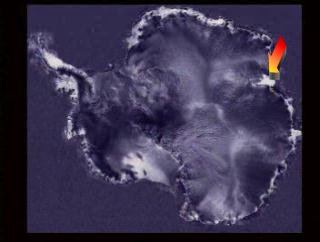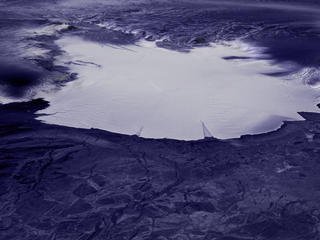Life under ice
Researchers unexpectedly find a community of sea creatures in the ocean beneath an ice shelf.
By Emily Sohn
Deep below a thick slab of floating ice off Antarctica, an astounding community of creatures has surprised scientists who had expected to find nothing there.
In December 2003, researchers drilled a hole through the Amery ice shelf in Antarctica. They picked a spot that was 100 kilometers (62 miles) from open ocean. And they had to dig through 480 meters (1,575 feet) of ice just to get to the ocean underneath.
 |
|
The satellite image of Antarctica shows the location of the Amery ice shelf (arrow).
|
| NASA/Goddard Space Flight Center Scientific Visualization Studio |
Once the drill broke through, a camera took pictures of a patch of seafloor that spanned 2 square meters (22 square feet).
No one expected to see much that far from open ocean. Scientists didn’t think that currents under the ice were strong enough to deliver food and nutrients to support life in such an environment. Creatures that live in the ocean’s depths often filter food out of the water or pick food off the seafloor.
In the photographs, however, the team identified more than two dozen species of sponges, mollusks, sea urchins, and other invertebrates, including a sea snail.
“These creatures are no different from those that live in open water at that depth,” says Martin J. Riddle, a marine biologist at the Australian Government Antarctic Division in Kingston, Tasmania.
 |
|
A head-on view of Antarctica’s Amery ice shelf.
|
| NASA/Goddard Space Flight Center Scientific Visualization Studio |
A probe measured the currents under the shelf, which were strong enough to deliver tiny creatures called microplankton to the area. Microplankton are at the bottom of the food chain.
In the future, the scientists say, paleontologists shouldn’t rule out the possibility that ancient communities of sea life were once covered with ice, too. It’s a cold but bustling world down there
Going Deeper:
Perkins, Sid. 2007. An unexpected, thriving ecosystem. Science News 171(Feb. 10):94. Available at http://www.sciencenews.org/articles/20070210/note14.asp .







